Blogs have come a long way over the years, from low-tech personal diaries to hipster enclaves. But how does blogging work for nonprofits? And is it really something you should start doing as part of your communications plan?
There are still a lot of misconceptions about the role of blogs, the types of information that should be published on them, and the overall return on investment. If you’re not sure if blogging is right for your organization, get up to speed on blogging basics from planning and publishing to post promotion.
Blogging for Beginners
What is a blog used for exactly? It’s not just about writing opinion pieces, long-form stories or sending out press releases. Instead think of a blog as an in-house publishing channel or news hub that you can use to share all types of information: action alerts, how-to articles, interviews, event announcements, photo galleries and more.
Your approach to blogging—what you publish, how often, how you distribute the content—is highly adaptable to your organization. There’s no one right way other than to be consistent. Where one organization might profile a volunteer every month, another might respond to current affairs, share organizational news and offer helpful resources for their community.
Dig into the basics of blogging with these resources:
- How a blog helps your nonprofit website
- The kinds of blog features you want to have
- Types of blog posts you could consider
Is a blog right for your marketing strategy?
One of the most important things to remember about a blog is that it’s a communication channel in your control. No need to wait for a reporter to cover your story. No problem when there’s a Facebook outage. Go ahead and answer that frequently asked question. When you start to harness the power of a blog, it quickly becomes a reliable way to get the word out.
You might also be worried about the time commitment, which is a common blogging concern. With a lot on your plate, it can seem like an extra step rather than a strategic one. Keep in mind that, while it will take time to write posts, you can decide the frequency (try monthly at first) and you can use the blog to get more mileage out of the content and stories you’re already putting together.
Review your marketing strategy and look for goals about raising awareness, increasing website traffic, thought leadership or motivating people to get involved. Blogging can support a range of initiatives and add another tool to your marketing toolbox.
How Does Blogging Work Best?
Are you on board with blogging in theory but still wondering what the process looks like? It’s different for every organization, but here’s an outline of an effective approach that follows the latest blogging best practices. (Note that this process assumes you will be blogging on your nonprofit’s website, which is highly recommended compared to posting on another platform.)
- Identify a topic that offers value to your target audience. If you’re optimizing for search engines, this stage would also include keyword research.
- Outline your post (conferring with colleagues if needed) and write an initial draft.
- Review the post internally and check it to make sure it’s ready to publish.
- Publish the post, which turns it into a live page on your website with its own link.
- Promote the post on your site by featuring it on the homepage and adding links to it from related pages or existing posts.
- Share it with others using tools like email and social media, which is described in more detail below.
- Repeat! To get in a good posting rhythm, start using an editorial calendar to plan out the topics and timing of your posts in advance.
- Analyze how it’s going every 6 months, trying to answer questions like “what topics and types of posts got the most traffic?” and “which posts resulted in the most actions?”.
If you’re feeling skeptical, don’t just take our word for it! Here’s what one of our clients had to say about getting started with a blog on their new site:
The blog has been great. It was a world we needed to get into. As a social service agency, we know we’re doing good work but didn’t know how to get it out there. With Wired Impact, we learned the value of that and how to do it.
Jan Keith, Aging Ahead
Get the Most Out of a Post
Publishing a blog post is an important step, but don’t stop there. To use a blog effectively in your marketing, you’ll want a plan of attack for promoting your blog content to reach people. The more places you share it, the better chance you have of attracting regular readers and keeping people engaged with your mission.
To help you visualize different promotional pieces and decide on an approach that works for you, I’ve put together some examples based on a blog post on one of our website platform demo sites.
Blog Page
On your website, there should be a main page for your blog where your posts are listed chronologically and entice readers to click to read more. If possible, add a featured image to each post to help it stand out and offer a brief introduction to attract interest.
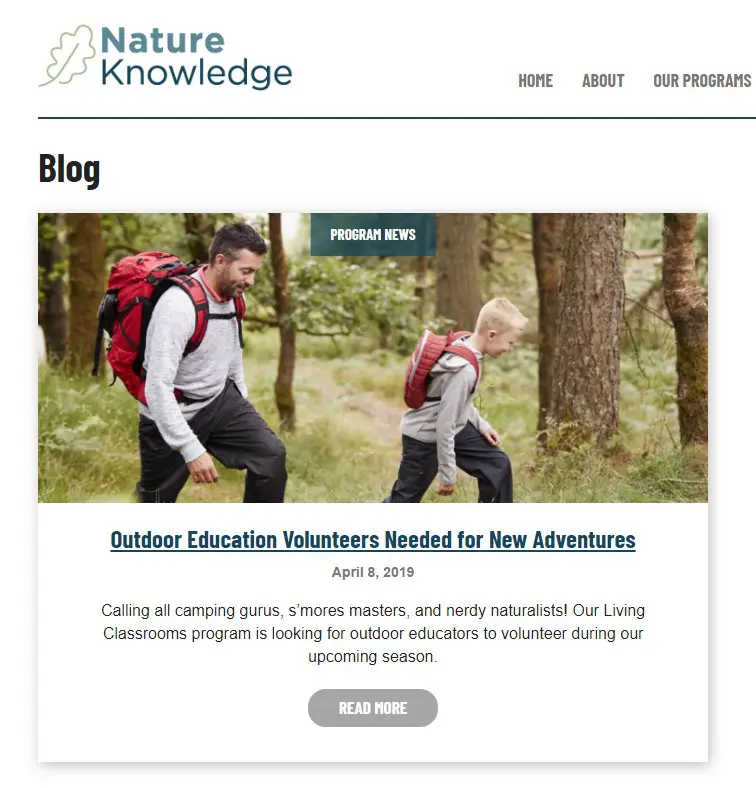
Homepage
Some websites are designed to automatically list the latest blog post(s) on the homepage. Not only does this functionality help visitors find important news, but it also keeps the page looking fresh.
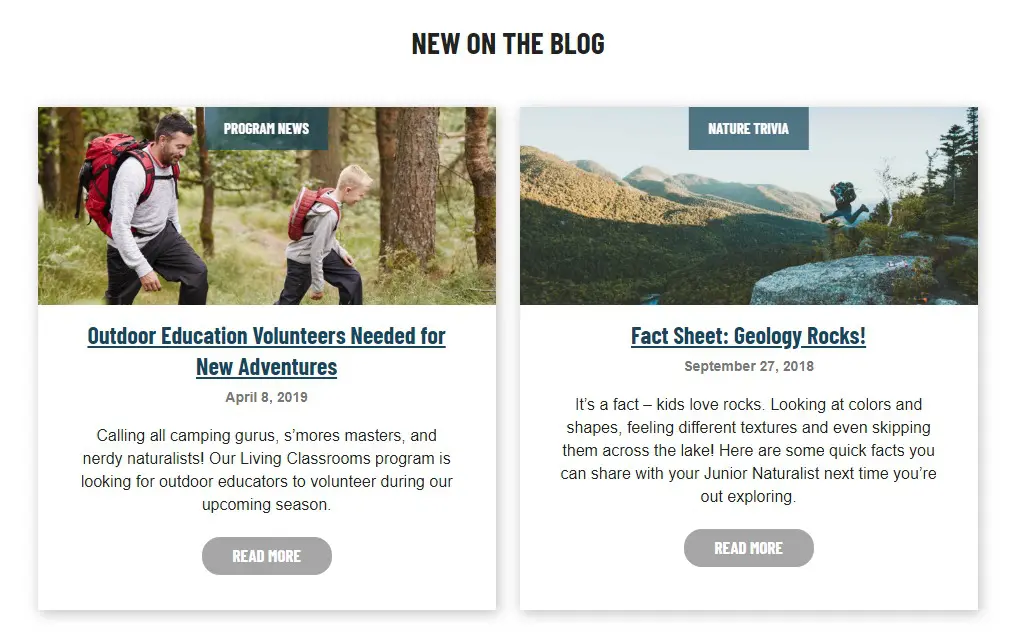
Internal Links
Forgetting about links is a common mistake. Adding links to related pages and posts on your website keeps visitors happily flowing through your content. In addition to including links within the blog post itself, look for opportunities to add links to a newly published post from other pages on your site. (This is also a great tactic for search engine optimization.)
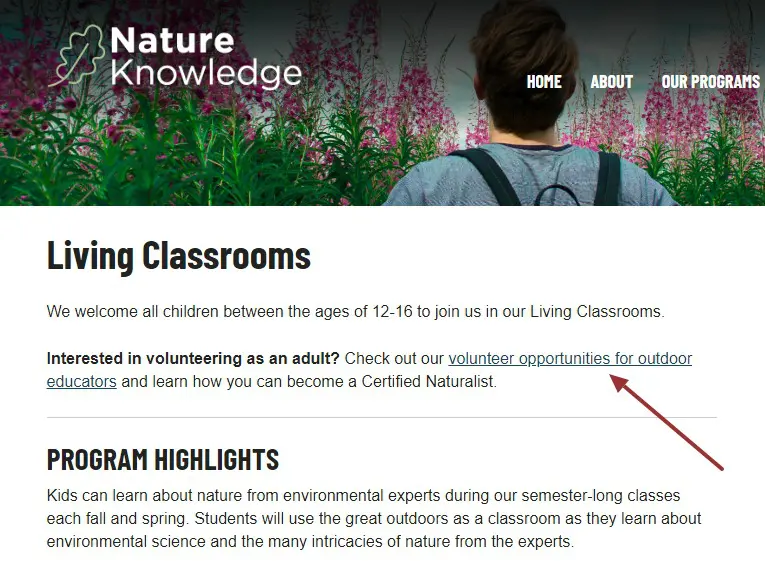
Social Media
Sharing your blog post on social media is an easy win! You can even share it multiple times to reach people at different times of the day or boost it to reach a specific crowd. Rather than just posting the link, it’s best to add a little text about the post—or a short snippet—and then a link to read more. Change up the format and length based on the channel (like Facebook, Twitter and LinkedIn) and the audience you’re trying to reach.


Promoting the post to email subscribers drives more traffic to the post, which can lead to people spending time on other pages of your site. Consider including the post in your email newsletter by offering a summary and a link to read the full post.
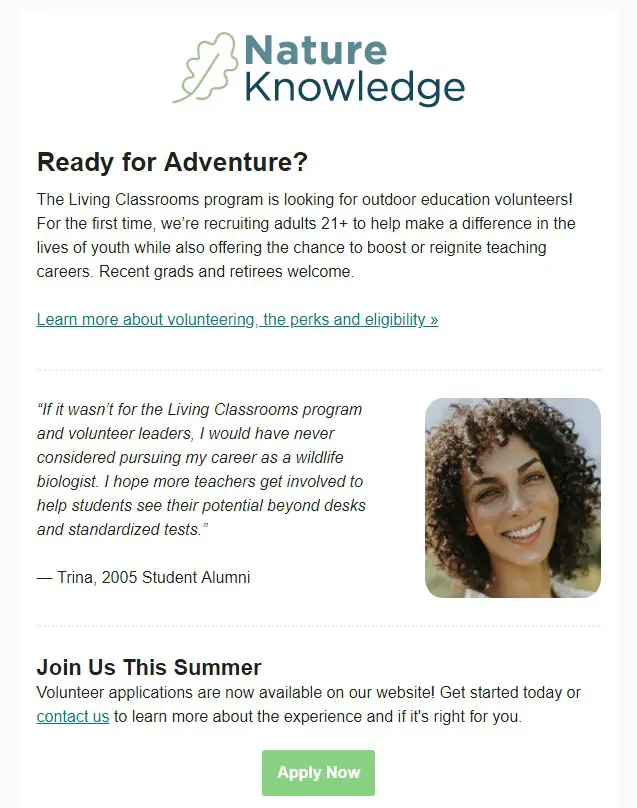
Google Ad
If you’re using a Google Ad Grant, there could be an opportunity to promote your blog post as the landing page for a new ad. Make sure the post is high-quality content and includes a strong call-to-action for readers, like asking them to sign up for emails, contact you, or download a resource.
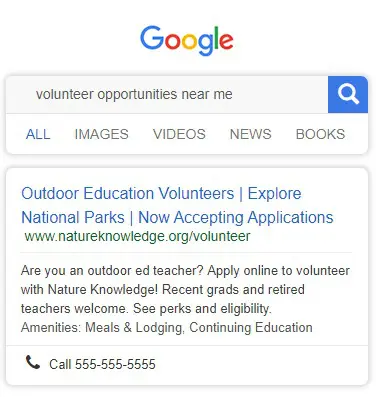
Download Our Nonprofit Blog Post Toolkit
Getting started with your blog can be intimidating. Download our blogging toolkit including a simple blog post template, pre-publishing checklist, and blog post promotion tips.
"*" indicates required fields
No matter the size of your organization or your level of experience, blogging on your nonprofit’s website is a marketing tactic you should seriously consider. Maximize your return on investment by making sure it’s a part of your larger marketing ecosystem and planning ahead to promote your posts.
What has kept your organization from blogging? Or, if you’re already blogging, how are you using it to reach your nonprofit’s marketing goals? Let’s talk in the comments. Feel free to drop a link to your nonprofit’s blog!
What You Should Do Now
01. Come to Nonprofit Website Office Hours
We cover a new topic every few weeks. Plus get a live answer to any website-related question you're wrestling with.
02. Book a Website Call
Find a time to discuss your nonprofit's website needs. Discover what's worked for other nonprofits like you and see how easy building your new site can be.
03. Start a Free Website Trial
Try our nonprofit website platform for yourself. Instantly get access to every feature to see if it's the right fit for your needs. No credit card required.

Comments